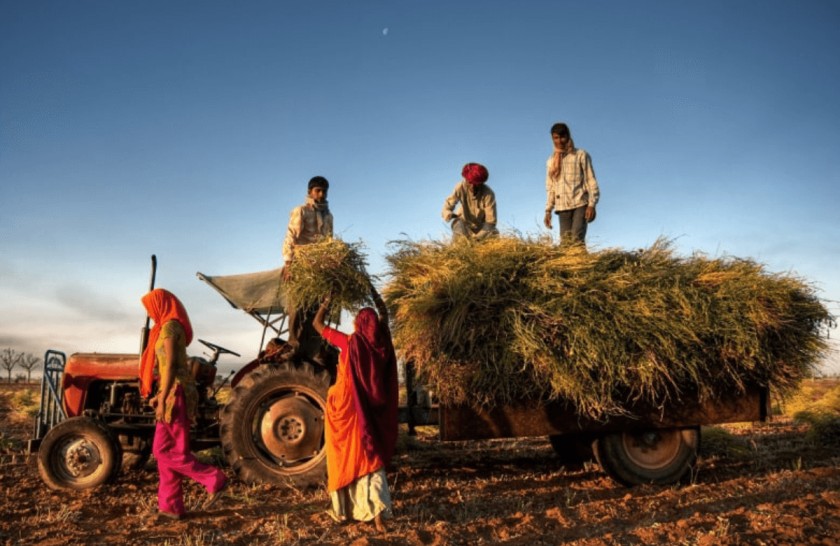- March 10, 2023
Labour data reveals disturbing trends in Indian economy

The National Statistical Office’s latest labor force survey reveals India’s economic distress, signs of ongoing challenges since 2018-19.
The National Statistical Office (NSO) recently released its fifth annual Periodic Labour Force Survey (PLFS) estimates for 2021-22, providing critical insights into employment and unemployment trends across India. Unlike urban quarterly surveys, which have a few months’ lag time, the annual survey offers comprehensive estimates for the entire country. This year’s survey is particularly noteworthy as it marks the first data collection period since the COVID-19 pandemic began, providing a valuable snapshot of the pandemic’s impact on the labour market in India.
According to the latest estimates from the Periodic Labour Force Survey (PLFS), the total workforce in India has increased slightly to 542 million, up 2 million from the previous year. The unemployment rate for the country has also decreased slightly from 4.2% to 4.1%. However, the unemployment rate for the youth demographic (15-29 years old) has only marginally decreased from 12.9% to 12.5%.
While the data indicates a modest recovery, it highlights that the economic conditions have remained relatively unchanged. What is more concerning is that these estimates reflect trends seen since 2018-19, suggesting ongoing distress in the economy. The PLFS estimates from 2017-18 to 2020-21 demonstrated the impact of the economic slowdown, which was further compounded by the pandemic. The latest estimates for 2021-22 confirm these trends, which should be a concern for policymakers.
One strong indicator of economic distress is the shift in the workforce back to agriculture, undoing the structural transformation that occurred between 2004-05 and 2017-18. The number of workers in agriculture declined by 33 million between 2004-05 and 2011-12, and a similar decline was seen between 2011-12 and 2017-18. However, the pandemic and slowdown have reversed this progress. The agricultural sector has seen a return of 36 million workers between 2017-18 and 2021-22, and the absolute count of workers in agriculture is now higher than it was in 2011-12. This reversal of structural transformation is concerning, as it suggests declining per-worker income in agriculture, leading to further rural distress.
Although the number of workers in agriculture is no longer increasing, the data indicates that those who turned to agriculture during the pandemic have not yet returned to their previous occupations. This suggests that the economy is still struggling to fully recover from the twin shocks of the pandemic and slowdown. Overall, the evidence of the shift back to agriculture highlights the ongoing distress in the economy, with implications for rural livelihoods and the broader economy.
Furthermore, the income and consumption estimates derived from the PLFS paint a bleak picture of the economy, indicating high levels of distress. These estimates suggest that it is not just the rural economy, but also the urban economy, that is experiencing slow growth of incomes, with real incomes declining in urban areas. In 2018-19, per capita income from all employment sources in urban areas was ₹5,186 per month. By 2021-22, in real terms at 2018-19 prices, it had marginally declined to ₹5,175 per month. For the country as a whole, per capita income increased by a mere 0.9% per annum between 2018-19 and 2021-22. While per capita consumption in urban areas is lower than its level in 2018-19, it has increased 1.4% per annum for the country. However, the data also reveals that regular wages are declining in real terms, with urban regular wages declining at a faster rate of 1.4% per annum compared to the 0.4% decline in rural regular wages. These trends in declining incomes and consumption are not surprising, given the data on regular wages.
The employment-unemployment estimates are a vital indicator of the Indian economy’s health. Worker participation in economic activity is a key measure of the level of economic activity, alongside aggregate gross domestic product (GDP) data. The PLFS reports reveal the significant damage caused by the pandemic and slowdown, resulting in workers returning to agriculture. However, the fact that a significant number of workers remain tied to agriculture suggests that the non-agricultural economy has yet to recover entirely, particularly in urban areas. Urban regular workers, who constitute almost half of all workers, are experiencing decreasing wage incomes. Although the agricultural sector may have provided refuge to millions displaced from non-farm sectors, an excess of workers in agriculture is also depressing per-worker incomes, thereby exacerbating the pressure on agricultural earnings.
In order to resuscitate the Indian economy, it is imperative to boost employment opportunities in non-agricultural sectors, coupled with an increase in income from such employment. This is critical to ensure that economic growth is geared towards generating more employment opportunities, which in turn can alleviate poverty and distress in the economy.
